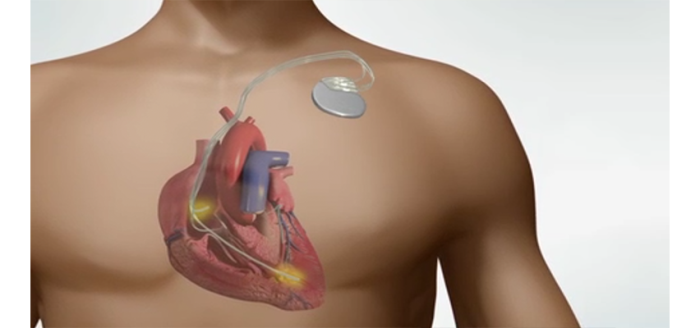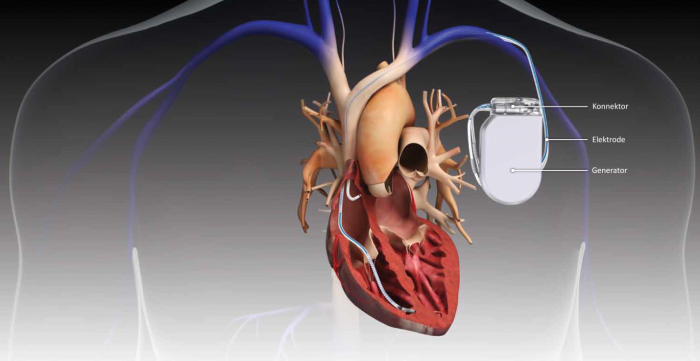Automated Implantable Cardioverter Defibrillators (AICDs) play a vital role in managing life-threatening arrhythmias and preventing sudden cardiac arrest. The implantation of AICDs is a critical procedure for patients with a high risk of serious heart rhythm disturbances. Understanding the nuances of AICD implantation, including the advancements in surgical techniques, is essential for both patients and healthcare providers. These innovations aim to enhance patient safety, minimize recovery time, and improve overall outcomes.
The Shift Toward Minimally Invasive Procedures
In recent years, there has been a significant shift toward minimally invasive procedures in the field of cardiac surgery. This approach reduces the physical trauma associated with traditional surgical methods, leading to quicker recovery times and less postoperative discomfort for patients. As medical technology evolves, the trend toward minimally invasive AICD implantation is becoming increasingly prevalent. These techniques allow for the placement of the device with smaller incisions, resulting in reduced scarring and a shorter hospital stay.
Overview of Traditional AICD Implantation Techniques
Traditionally, AICD implantation involves a surgical procedure where the device is placed in the chest through an incision. The lead wires are then threaded through the veins and positioned within the heart. While effective, this method can lead to longer recovery times and increased complications such as infection or lead displacement. Understanding these traditional techniques provides insight into the advancements that have emerged, focusing on enhancing patient care and safety.

Benefits of Minimally Invasive AICD Implantation
Minimally invasive AICD implantation offers several advantages over traditional methods. Patients typically experience less pain, reduced blood loss, and a lower risk of infection. Additionally, the smaller incisions contribute to a more aesthetically pleasing outcome with less scarring. Recovery times are generally shorter, allowing patients to return to their daily activities more quickly. These benefits highlight the importance of ongoing research and development in cardiac procedures.
Key Techniques: Subcutaneous vs. Transvenous Approaches
There are two primary techniques for AICD implantation: subcutaneous and transvenous. The subcutaneous approach involves placing the device beneath the skin, eliminating the need for leads that enter the heart through the veins. This technique can significantly reduce the risk of lead-related complications. Conversely, the transvenous approach remains a standard method, utilizing lead wires that connect directly to the heart. Each technique has its indications, benefits, and potential drawbacks, making it crucial for healthcare providers to assess each patient’s unique situation when determining the most appropriate method.
Innovations in Imaging Technology for AICD Placement
Advancements in imaging technology have significantly improved the accuracy and safety of AICD implantation. Techniques such as fluoroscopy and advanced ultrasound provide real-time visualization during the procedure, allowing for precise placement of the device and lead wires. These innovations help minimize complications and enhance the overall effectiveness of the implantation process, ensuring that the AICD functions optimally in managing the patient's heart rhythm.
Enhanced Surgical Instruments and Tools for Precision
The development of specialized surgical instruments and tools has further refined the process of AICD implantation. Enhanced devices, such as guidewires and delivery systems, allow for greater precision during placement. These tools are designed to improve the ease of access to the heart and optimize lead positioning, reducing the likelihood of complications. Continuous improvement in surgical techniques and instrument design is essential for advancing patient outcomes and safety in AICD implantation.
The Role of Robotics in AICD Implantation
Robotic-assisted technology has revolutionized AICD implantation by enhancing precision and control during the procedure. Robotics allow for smaller incisions, which can lead to less tissue damage and faster recovery times. The increased accuracy also reduces the risk of complications, making the procedure safer for patients.
Patient Selection Criteria for Minimally Invasive Techniques
Not all patients are candidates for minimally invasive AICD implantation. Ideal candidates typically include those with favorable anatomy, lower body mass index (BMI), and no history of extensive thoracic surgery. The decision is made based on the patient's overall health, heart condition, and the complexity of their specific case.
Preoperative Assessment and Planning for Optimal Outcomes
A thorough preoperative assessment is crucial for the success of minimally invasive AICD procedures. This includes imaging studies, such as echocardiograms or CT scans, to evaluate the heart's structure and function. The surgical team collaborates to create a detailed plan that addresses any potential risks and optimizes patient outcomes.
Post-Operative Recovery: What Patients Can Expect
After minimally invasive AICD implantation, patients typically experience shorter recovery times compared to traditional methods. Most can expect to stay in the hospital for a day or two. Patients may feel some discomfort at the incision site, but overall, they can usually resume light activities within a week and return to regular routines in a few weeks, depending on individual healing.

Comparing Complications: Minimally Invasive vs. Traditional Methods
Minimally invasive AICD implantation generally has fewer complications compared to traditional methods. While traditional surgery may involve larger incisions and a longer recovery period, minimally invasive techniques often lead to reduced pain, lower infection rates, and shorter hospital stays. However, it's essential to consider the specific risks associated with each approach.
Long-Term Efficacy of Minimally Invasive AICD Procedures
Research indicates that the long-term efficacy of minimally invasive AICD implantation is comparable to traditional methods. Patients benefit from effective arrhythmia management, improved quality of life, and lower rates of complications. Ongoing studies continue to evaluate the long-term outcomes of these procedures to ensure their safety and effectiveness.
Patient Experiences: Testimonials on Minimally Invasive Techniques
Patient testimonials often highlight the advantages of minimally invasive AICD techniques, including faster recovery and less postoperative pain. Many express satisfaction with the quick return to normal activities and the overall positive impact on their quality of life. Hearing these experiences can provide hope and encouragement to prospective patients.
Future Directions: Ongoing Research in AICD Technology
Ongoing research in AICD technology focuses on enhancing device performance, reducing complications, and improving patient outcomes. Innovations may include advanced imaging techniques, improved device design, and the integration of artificial intelligence for better monitoring and predictive analytics. These advancements hold promise for further improving AICD implantation techniques.
Cost-Effectiveness of Minimally Invasive AICD Implantation
Minimally invasive AICD implantation can be cost-effective in the long term due to shorter hospital stays and reduced postoperative complications. While the initial cost may be higher than traditional methods, the overall savings from quicker recovery and lower rates of complications may outweigh these expenses.
Educating Patients About New Techniques and Benefits
Patient education is vital for understanding the benefits and risks associated with minimally invasive AICD techniques. Healthcare providers should ensure patients are informed about the latest advancements, helping them make educated decisions regarding their treatment options. Informational materials, seminars, and one-on-one discussions can enhance understanding and engagement.
The Role of Cardiologists in Advancing AICD Practices
Cardiologists play a crucial role in advancing AICD practices by staying updated on the latest techniques and technologies. They are responsible for evaluating patient candidacy, performing procedures, and providing ongoing care. Collaborative efforts among cardiologists, surgeons, and researchers foster innovation and improve patient outcomes.
Challenges and Considerations in Minimally Invasive AICD Surgery
While minimally invasive AICD surgery offers numerous benefits, challenges remain. These include ensuring proper device placement, managing patient anxiety, and addressing potential complications such as bleeding or infection. The surgical team must be well-prepared to handle these challenges and ensure the best possible outcomes for patients.
Life After AICD Implantation: Lifestyle Changes and Adaptations
Understand the lifestyle changes and adaptations required after AICD implantation. This section covers essential adjustments patients may need to make in their daily lives, including activity restrictions, follow-up care, and how to maintain heart health while living with an AICD.
Risks and Complications Associated with AICD Implantation
Get informed about the risks and complications associated with AICD implantation. This section outlines potential risks, including infection and device malfunction, and emphasizes the importance of thorough pre-operative assessment and post-operative monitoring to ensure patient safety.
Conclusion: The Future of AICD Implantation Techniques
The future of AICD implantation techniques looks promising, with advancements in robotics, imaging, and device technology. As minimally invasive methods continue to evolve, patients can expect safer procedures, faster recoveries, and improved long-term outcomes. Ongoing education and research will further enhance these techniques, ultimately benefiting patients with cardiac conditions.
Best AICD Implantation in India
The Best AICD Implantation in India involves placing a small device to monitor heart rhythms and deliver lifesaving shocks if dangerous arrhythmias are detected, ensuring enhanced heart safety for high-risk patients.
Best Aicd Implantation Hospitals in India
The best aicd implantation hospitals in india are equipped with cutting-edge technology and skilled cardiology teams, providing comprehensive care and expertise in cardiac rhythm management.
AICD Implantation Cost in India
The aicd implantation cost in india is competitively priced, making advanced cardiac care accessible with transparent and affordable treatment options.
Best AICD Surgeons in India
The Best AICD Surgeons in India are highly skilled in cardiac device implantation, providing personalized care to help patients manage serious heart conditions effectively.
FAQ
What are the main advantages of minimally invasive AICD implantation?
The main advantages include smaller incisions, reduced pain, faster recovery times, and lower risk of complications compared to traditional methods.
How does the subcutaneous approach differ from the transvenous method?
The subcutaneous approach involves placing the device under the skin, avoiding the veins and heart chambers, while the transvenous method involves threading leads through the veins into the heart.
Are there specific risks associated with minimally invasive techniques?
While minimally invasive techniques generally have fewer risks, potential complications include bleeding, infection, lead displacement, and device malfunction.
What is the recovery time for minimally invasive AICD implantation?
Patients typically experience a shorter recovery time, with many returning to light activities within a week and resuming normal routines in a few weeks.
How can patients learn more about the latest techniques in AICD surgery?
Patients can consult their healthcare providers for information, attend educational seminars, and access reputable online resources to stay informed about advancements in AICD surgery.